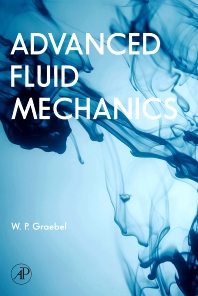
Strength of Materials II -E
|
Week |
Topics Covered |
|
1-4 |
Chapter 4 (Shear Force and Bending Moment Diagrams) |
|
Equations Method |
|
|
Graphical Method |
|
|
5-9 |
Chapter 5 (Stresses in Beams) |
|
Flexural Stresses |
|
|
Shear Stresses |
|
|
Composite Beams |
|
|
10-12 |
Chapter 6 (Transformation of Stresses) |
|
Compound Stresses |
|
|
Mohr’s Circle Method |
|
|
13-15 |
Chapter 7 (Deflection of Beams) |
|
Moment-Area Method |
|
|
Superposition Method |

Programming IV - E
Fortran is a general-purpose, compiled imperative programming language that is especially suited to numeric computation and scientific computing. Fortran was originally developed by IBM in the 1950s for scientific and engineering applications, and subsequently came to dominate scientific computing.

Mathematics IV - E
engineering mathematics consisted mostly of applied analysis, most notably: differential equations; real and complex analysis (including vector and tensor analysis); approximation theory (broadly construed, to include asymptotic, variational, and perturbative methods, representations, numerical analysis); Fourier analysis; potential theory; as well as linear algebra and applied probability, outside of analysis. These areas of mathematics were intimately tied to the development of Newtonian physics, and the mathematical physics of that period. This history also left a legacy: until the early 20th century subjects such as classical mechanics were often taught in applied mathematics departments at American universities, and fluid mechanics may still be taught in (applied) mathematics as well as engineering departments.

Fluid Mechanic II - E
Fluid mechanics is the branch of physics concerned with the mechanics of fluids (liquids, gases, and plasmas) and the forces on them. It has applications in a wide range of disciplines, including mechanical, civil, chemical and biomedical engineering, geophysics, oceanography, meteorology, astrophysics, and biology.

English Language II - E
In this course, we will cover the second 5 units of the New Headway book (Academic Skills Level 1 ) also, the student will gain the opportunity to develop his reading, writing, speaking, and listining skills.

Engineering Surveying II - E
Introduction : Surveying is the basis for planning, implementing and following up on most engineering related projects Surface areas such as buildings, roads, airports, dams and irrigation canals. It is also important for careers Non-engineering that has a direct or indirect connection with surveying works such as geography and geology marine and ocean sciences, forest sciences, agriculture and military sciences
This course will cover : the definition of surveying , the basic principles of surveying , various filed issues , Leveling , sections , volumes
References :
1. المساحه الهندسيه - ياسين عبيد احمد - كلية الهندسه -جامعة البصره -1990 -وزارة التعليم العالي والبحث العلمي
2. هندسة المساحه - د عباس زيدان -البناء والانشاءات - الجامعه التكنولوجيه - الطبعه الاولى -2009
3. A text book of surveying and leveling R.Agor.2012.Delhi
4. Surveying , Mimi Das , Bahargag Das , Madan Das , 2010 , New Delhi .
5. Fundamental of Surveying , S.k . Roy , 2009 , Eight Edition , New

Concrete Technology II - E
:Course Objective
(Introduction of concrete mix design and its calculation, Types of concrete and main usage, concrete hydration and methods curing, Concrete hardening (internal and external effects), the defect of concrete)
:References
NEVILLE, A. M. 2005 “PROPERTIES OF CONCRETE (5TH EDITION)”
ZONGJIN LI, 2011 “ADVANCED CONCRETE TECHNOLOGY”.
:Course Description: The aim of this course is to enable the student to
Durability of concrete: Strength and durability relationship, effect of w/c on durability, different exposure condition as per IS 456 minimum and maximum cement content, effect of permeability, sulphate attack, methods of controlling sulphate attack. Durability of concrete in sea water, Test on hardened concrete - flexural strength, comparison of cube test and cylinder test, Schmidt’s rebound hammer, Ultrasonic pulse velocity method.
Special Concrete: Light weight concrete, no-fines concrete, high density concrete, fiber reinforced concrete, self-compacting concrete, high strength concrete, high performance concrete, manufacturing of ready mix concrete, cold weather concreting, hot weather concreting, pavement quality concrete
Concrete Mix Design: Objectives of mix design, different methods of mix design, factors affecting mix proportions, quality control of concrete, statistical methods, acceptance criteria, Numerical on mix design by ACI 211.1-91, IS 10262- 2009andIS 456. Mix design of fly ash concrete by IS 10262 – 2009.
:Course Outcomes :At the end of the course the students should be able to
identify the functional role of ingredients of concrete and apply this knowledge to mix design philosophy acquire and apply fundamental knowledge in the fresh and hardened properties of concrete
evaluate the effect of the environment on service life performance, properties and failure modes of structural concrete and demonstrate techniques of measuring the Non Destructive Testing of concrete structure
develop an awareness of the utilization of waste materials as novel innovative materials for use in concrete
design a concrete mix which fulfills the required properties for fresh and hardened concrete

Building Constriction II - E
This course will introduce and train students in the basic skills necessary to pursue
a career in building construction sector. This course covers soil work, foundations
plumbing, concrete work, brickwork, blockwork and masonry works. It also includes
introduction to the history of construction, types of buildings and construction
stages.